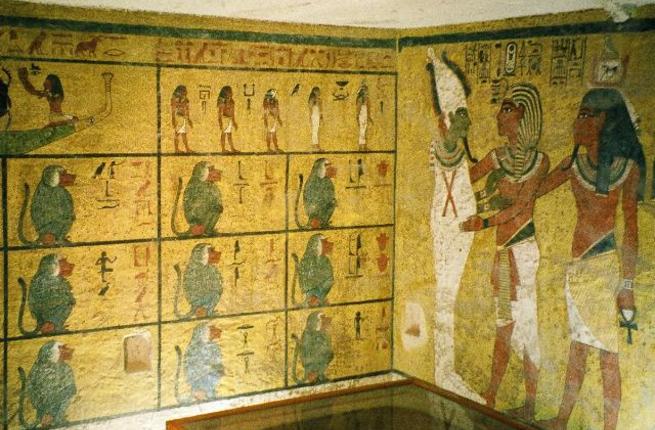-
Tips for becoming a good boxer - November 6, 2020
-
7 expert tips for making your hens night a memorable one - November 6, 2020
-
5 reasons to host your Christmas party on a cruise boat - November 6, 2020
-
What to do when you’re charged with a crime - November 6, 2020
-
Should you get one or multiple dogs? Here’s all you need to know - November 3, 2020
-
A Guide: How to Build Your Very Own Magic Mirror - February 14, 2019
-
Our Top Inspirational Baseball Stars - November 24, 2018
-
Five Tech Tools That Will Help You Turn Your Blog into a Business - November 24, 2018
-
How to Indulge on Vacation without Expanding Your Waist - November 9, 2018
-
5 Strategies for Businesses to Appeal to Today’s Increasingly Mobile-Crazed Customers - November 9, 2018
King Tut’s tomb may contain two hidden chambers
Egyptologist Nicholas Reeves, from the University of Arizona, is on an expedition beneath the sacred sands where, years ago, scientists unearthed the burial chamber of Tutankhamun’s tomb.
Advertisement
Reeves made news this summer when after looking at high-res images of the 3,300-year-old tomb’s walls, he hypothesized that there were hidden chambers behind a covered up doorway.
It is now believed that the tomb of the boy-king discovered in 1922 may be hiding two rather than one burial site. Instead, the archeologists will find the remains of Tut’s mom Queen Kiya, he expects.
Last week, the Egyptian Antiquities Ministry gave British Egyptologist Nicholas Reeves permission to test his widely publicized theory that there were traces of walled up doors in the tomb that could lead to a larger chamber containing the lost remains of Nefertiti.
National Geographic reports that, until Monday, Reeves’ theory had not been supported by a physical examination of the tomb.
According to Eldamaty, scratching and markings on both the northern and western walls are similar to those found by Howard Carter on the entrance gate of King Tut’s tomb.
Eldamaty, Reeves, and the scientific committee are to embark Tuesday on a second trip to the Valley of the Kings, but this time to inspect three tombs of royals who were alive in Tutanakhmun’s era: King and military commander Horemhab, King Akhenaten’s brother King Smenkare, and Amenhotep III. It’s a contentious topic among archaeologists, but according to his theory, King Tut was hastily buried after his untimely death at the age of 19 in an underground burial chamber that wasn’t meant for him. Carter, who excavated with a meticulousness that was highly unusual for his era, collected the gritty material, and it’s still stored in a side room of the tomb, where Reeves and the others were able to examine it.
“What my Egyptian colleagues discovered is that there is a distinct difference in the surface of the surrounding wall and the central part that would be covering the door”, Reeves added. He believes there could be two unexplored doorways, concealed by the plaster walls.
“That is a tomb type favored by queens”, Reeves said.
“Maybe a room or a tomb… something there which will be a new addition to Egyptology but I don’t agree that much with him that it is Nefertiti’s tomb there.”
Advertisement
“If another wing to this tomb or one that predates it is found, that alone would be a major discovery”, Egypt’s antiquities minister said. The results of the radar scans are expected to be announced on November 4.





























